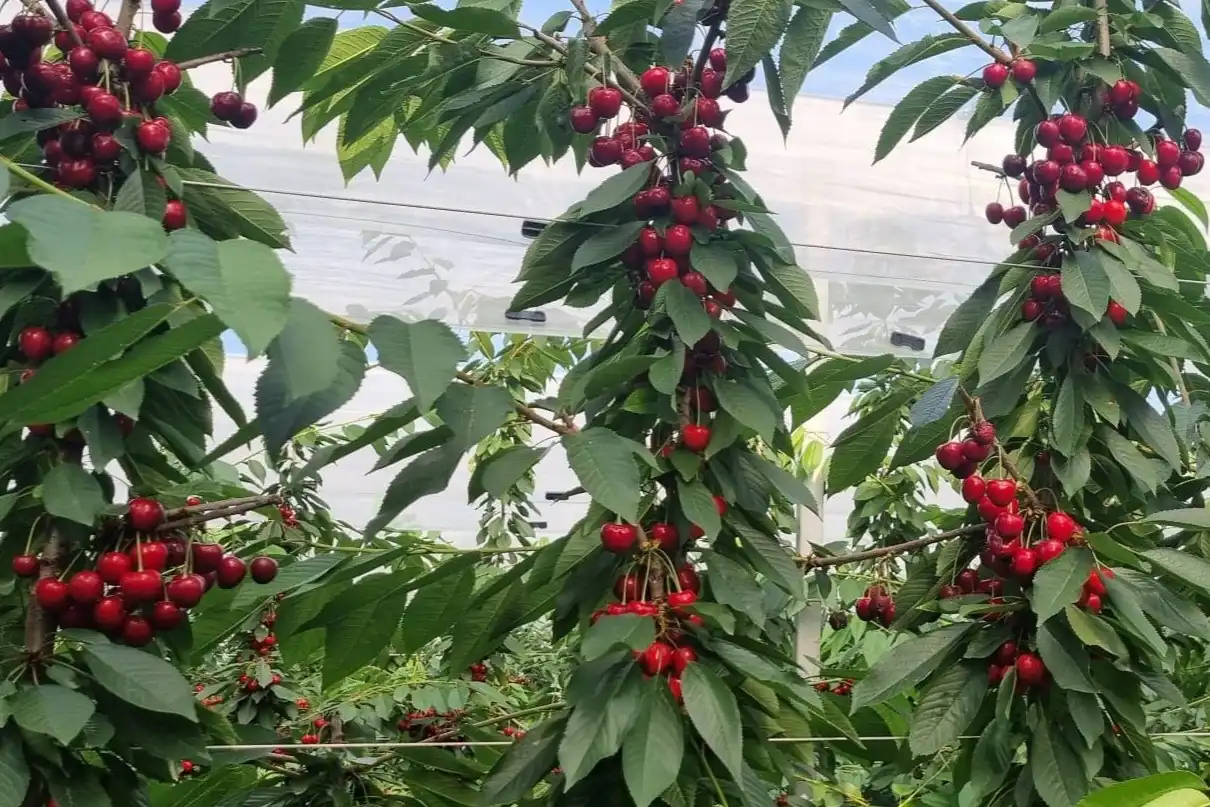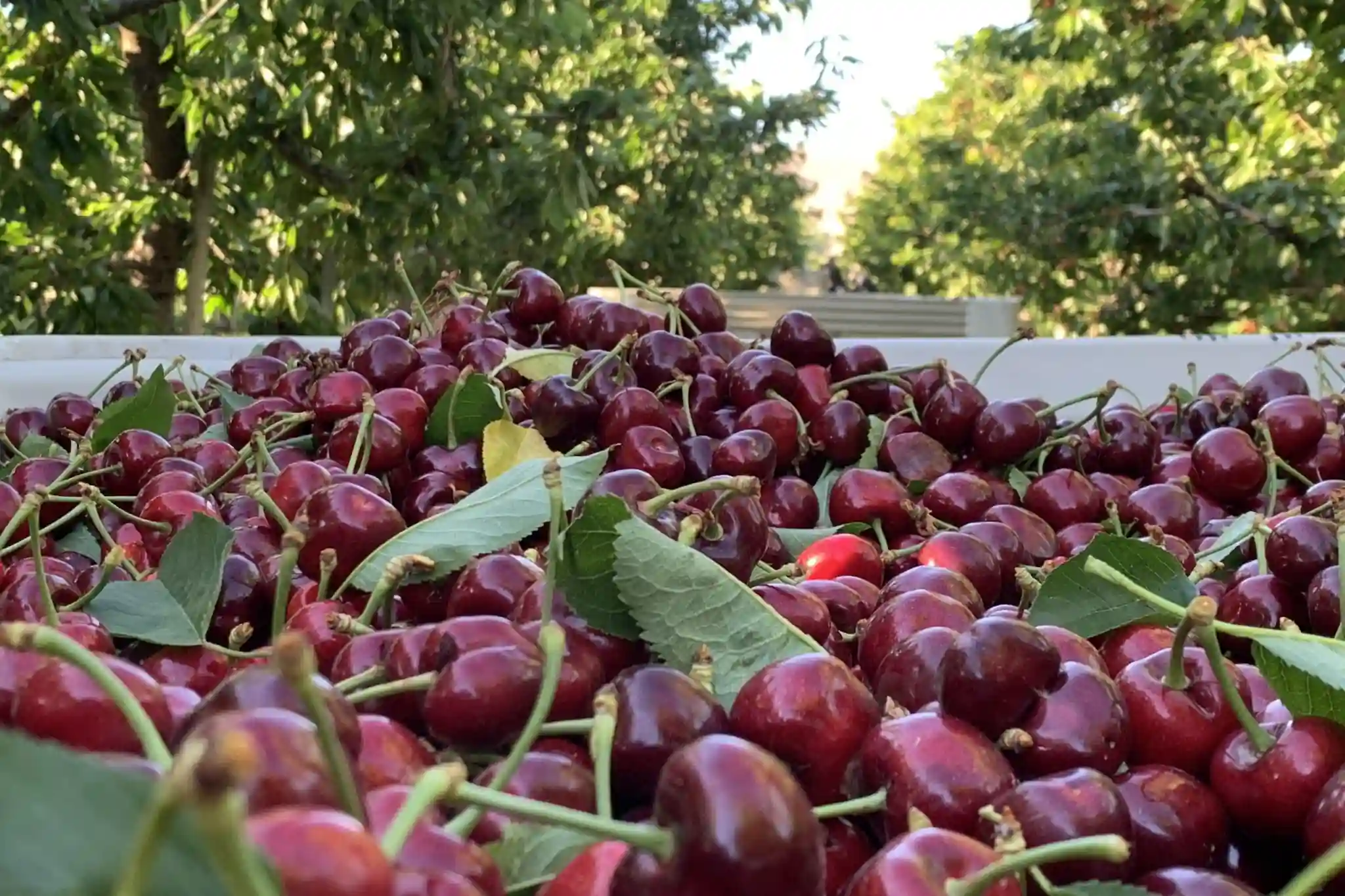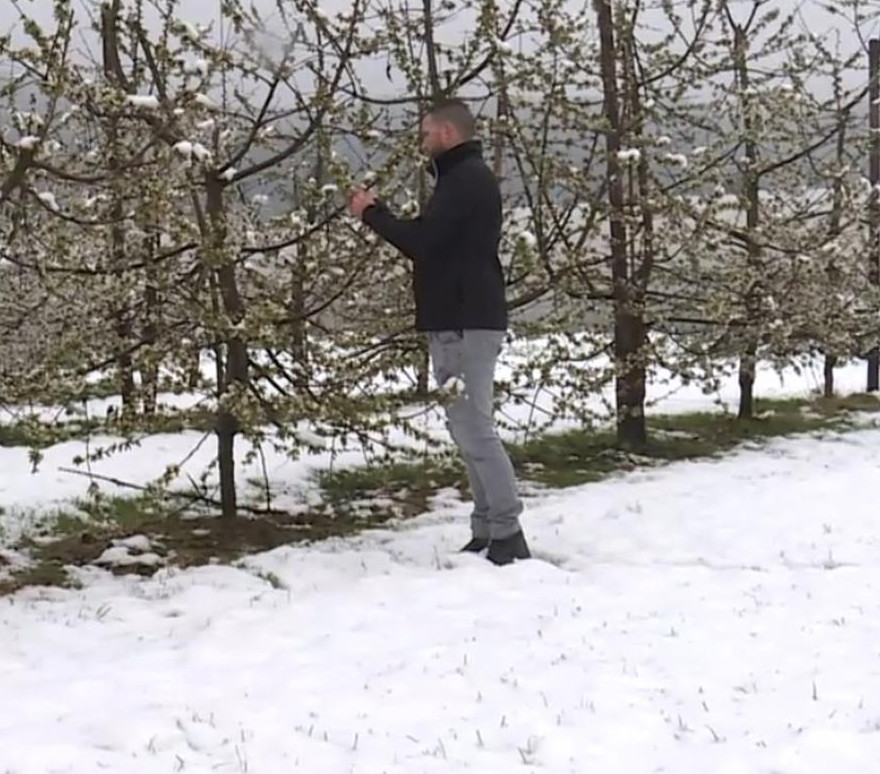Cherry cultivation has always generated considerable interest in the horticultural sector, even during times when other species, such as peach, went through deep crises.
The cherry tree has benefited from a combination of factors, such as the growing appreciation of the product by consumers, varietal innovation, and improvements in cultivation models.
Varietal innovation, in particular, has brought great benefits thanks to self-fertility, improvements in organoleptic profile, storability, color, fruit size, and the extension of the harvest calendar through new varieties.

New cultivation models
We have moved from the old vase-shaped forms with large trees to new high-density models (600–1,200 plants/ha), reaching extremely high densities (up to 4,000 plants/ha) with pedestrian orchards that facilitate harvesting, still manual but without the need for ladders, everything within the picker’s reach.
However, this evolution of the sector is not yet complete as in other species, such as apple or pear, and this is certainly due to the lack of precise references regarding the rootstocks currently used in cherry cultivation worldwide.
The need for new models
The shift towards two-dimensional forms is an unavoidable choice if the cherry sector wants to continue growing in terms of profitability and attracting new investments and resources.
High-density models respond to the need to implement solutions for precision cherry growing, from the introduction of autonomous equipment to the simple rationalization of pruning, soil, and foliage management, which are greatly simplified in wall systems — fundamental elements for the sector’s sustainability and growth.
From Michigan comes a possible solution: Corette, the cherry rootstock series including Clinton, Cass, Crawford, Lake, and Claire — each with different vigor and characteristics — designed to meet the needs of modern cherry orchards.
The Corette series can be used in wall orchards at medium, high, and very high density, adapting to all training systems chosen by growers.
Field validation
In recent years, numerous commercial trials have been carried out in different areas of Spain (Cáceres, Mequinenza, Huesca) and Italy (Bari, Sammichele di Bari, Vignola) to validate and standardize the use of these rootstocks.
Preliminary results are very promising, especially considering the extreme climatic conditions of recent years, with dry summers and lack of rainfall.
All rootstocks have responded very well to water stress and high temperatures — challenges that modern cherry cultivation must face to progress.
Adaptability and climate response
This result is the outcome of genetics: comparing the Corette series with other materials commonly used in high-density orchards, it is easy to see that when faced with even minimal water stress or temperatures above 32 °C, the shoot tips of trees grafted onto non-Corette rootstocks tend to stop growing and suffer significant stress.
This was one of the main limitations of wall systems in typical areas of southern Spain or Italy, where the absence of suitable rootstocks for these environments had effectively prevented the introduction or transition to two-dimensional models.
Today, all this is possible with the Corette series: rootstocks that better withstand these climatic conditions (water stress and high temperatures), allowing these models to be adopted even at lower latitudes.
It is difficult to define the perfect rootstock — if it existed, there would be no reason to continue scientific research — but there are rootstocks that adapt better to climatic conditions, nutritional requirements, and specific cultivation models.
Focus on the Cass rootstock
It is difficult to fully describe the characteristics of each rootstock, but for those seeking earliness in ripening, the key word is Cass.
This rootstock has moderate vigor, intermediate between G-5 and G-6, and is excellent for wall or vase orchards with reduced vigor. It ensures very early bearing and an advance in ripening estimated at 4 to 6 days.
It clearly stands out from other rootstocks in the same series and from those used as references (Adara, Colt, Maxma, Prunus Mahaleb).
This advance in fruit ripening is particularly evident with early varieties such as Nimba and Sweet Aryanna, accompanied by a significant increase in fruit size, up to 27% larger compared to rootstocks like Prunus Mahaleb, widely used in southern Italy.
This opens up important reflections on how to meet demand for a specific variety, bringing it to market through the use of different rootstocks, extending the supply calendar, and promoting greater customer loyalty.
Alternative choices: Crawford and Lake
Creating continuity and stability in the market by relying solely on one variety is not always enough; the ideal variety does not exist, but sometimes everything should be observed… from the roots.
For those seeking intermediate vigor and hardiness, the solution is Crawford, with vigor similar to G.6, very hardy and suitable for suboptimal soils.
It performs well in replanting or rotation situations in the same plot. It is also suitable for pot or spindle orchards, with early bearing without compromising yield, fruit size, or weight.
It also supports very well mid-late and self-fertile varieties, which tend to suffer in cases of overproduction.
An intermediate solution is represented by Lake, which offers good hardiness — though lower than Crawford — and a slight advance in fruit ripening.
It presents itself as a good intermediate rootstock, capable of balancing the various needs of the experienced grower.
Future outlook
These are still preliminary evaluations that require further years of testing and experimentation to confirm the collected data. However, having distributed trials in different areas and with different varieties allows optimism regarding this series of rootstocks, which will undoubtedly give a strong boost to a market of great interest.
No less interesting are Claire and Clinton, for which trial results are still partial.
Clinton seems to have the lowest vigor of all, while showing excellent hardiness, which is a distinctive genetic trait of the whole series.
Giuseppe Rutigliano
Agromillora
Image source: SL Fruit Service
Cherry Times - All rights reserved













